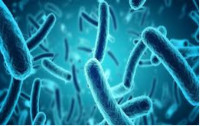Biodegradative Activities of Some Indigenous Farm Soil Bacteria on Selected Pesticides https://www.doi.org/10.26538/tjnpr/v8i3.31
Main Article Content
Abstract
Pesticides play a pivotal role in contemporary agriculture, serving as vital tools for safeguarding crops against pest infestations and diseases. Nevertheless, the widespread application of pesticides has raised concerns due to their potential unintended consequences on the environment and human health. This study investigates the variability in bacterial populations in farm soil and their pesticide-degrading potentials. The isolates were characterized using different conventional and molecular methods. The bacterial isolates were tested against organophosphorus pesticides using quantitative and qualitative methods at different concentrations to detect their degradative ability. Three bacterial isolates were selected and molecularly characterized by the 16S rDNA technique. The metabolites produced from the degraded organophosphorous pesticides were analyzed using the Fourier Transform Infrared Spectrophotometer (FTIR). Variations were observed in both Total Bacteria Count (TBC) (10.18 - 11.00 Log10 CFU/ml) and Pesticide-degrading Bacteria Count (PDBC) (6.09 - 8.42 Log10 CFU/ml) among different soil samples. The three selected isolates were identified as Pseudomonas aeruginosa, Bacillus subtilis and Bacillus thuringiensis based on 16Sr RNA gene sequences. These bacterial strains exhibited distinct varied susceptibility patterns at varying concentrations of Methomyl and Emamectin Benzoate. This research highlights the role of specific bacterial strains in pesticide degradation and their potential environmental implications.
Downloads
Article Details

This work is licensed under a Creative Commons Attribution-NonCommercial-NoDerivatives 4.0 International License.
References
Sahoo HK, Behera B, Satapathy M, Behera SD. Sustainable Rural Livelihood Security of Small Farmers through Efficient Resource Recycling in Crop-Fish-Poultry-Mushroom based Integrated Farming System Model. Int J Curr Microbiol Appl Sci. 2019; 8(12):1745–1768. Doi.org/10.20546/ijcmas.
Victo AO, Onyeukwu PE. Agricultural Commodity Export and Nigeria’s Gross Domestic Product Between 2009 to 2018. Int. J. Innov. Sustain. Dev. 2022. 8(2), pp.7-33.
Hlatshwayo SI, Ngidi MSC, Ojo TO, Modi AT, Mabhaudhi T, Slotow R The determinants of crop productivity and its effect on food and nutrition security in rural communities of South Africa. Front. Sustain. Food Syst. 2023. 7:1091333. Doi: 10.3389/fsufs.2023.10913
Schaffer A, Kästner M, Trapp S. A unified approach for including non-extractable residues (NER) of chemicals and pesticides in the assessment of persistence. Environ. Sci. Eur. 2018. 30(1). Doi.org/10.1186/s12302-018-0181-x
Kanmony JC. Use of Pesticides on Crops and Its Impact on Health. Glob. j. nutr. food sci. 2020. 2(5). Doi.org/10.33552/gjnfs.2020.02.000547
Sang CH, Sorensen PB, An W, Andersen JH, Yang M. Chronic health risk comparison between China and Denmark on dietary exposure to chlorpyrifos. Environ. Pollut. 2020. 257, 113590.
Varjani SJ. Microbial degradation of petroleum hydrocarbons. Bioresour. Techno. 2017. 223, 277–286.
Pathak VM, Verma VK, Rawat BS, Kaur B, Babu N, Sharma A, Dewali S, Yadav M, Kumari R, Singh S, Mohapatra A, Pandey V, Rana N, Cunill JM. Current status of pesticide effects on the environment, human health and its eco-friendly management as bioremediation: A comprehensive review. Front Microbiol. 202. 17;13:962619. Doi: 10.3389/fmicb.
Jakubauskaite V, Zukauskaite A, Kryzevicius Z, Ambrazaitiene D, Vilkiene M, Karcauskiene D. Bioremediation of the soil contaminated with petroleum oil products using sewage sludge. Acta Agric. Scand. Soil Sci. Plant Nutr. 2016. 66(8), 664–670.
Raffa CM, Chiampo F. Bioremediation of Agricultural Soils Polluted with Pesticides: A Review. Bioengineering (Basel). 2021. 8(7):92. Doi: 10.3390/bioengineering8070092.
Ijah UJJ, Abioye OP. Assessment of physicochemical and microbiological properties of soil 30 months after kerosene spill. J. Res. Sci. Manag. 2003. 1(1): 24-30.
Trinidade A, Skingsley A, Yung MW. Pediatric cholesteatoma surgery using a single-staged canal wall down approach: results of a 5-year longitudinal study. Otol Neurotol. 2015 (1):82-5. Doi: 10.1097/MAO.0000000000000598.
Onuoha SC, Olugbue VU, Uraku JA, Uchendu DO. Biodegradation potentials of hydrocarbon degraders from waste lubricating oil spilled soils in Ebonyi State, Nigeria. Int J Agric Biol. 2011. 13:586590.
Cycoń M, Żmijowska A, Piotrowska-Seget Z. Enhancement of herbicide degradation by a mixed culture of 2-chlorophenol-degrading Pseudomonas and Achromobacter strains. Environ. Sci. Pollut. Res.2018. 25(23), 22838-22848.
Tudi M, Daniel Ruan H, Wang L, Lyu J, Sadler R, Connell D, Chu C, Phung DT. Agriculture Development, Pesticide Application and Its Impact on the Environment. Int J Environ Res Public Health. 2021. 8(3):1112. Doi: 10.3390/ijerph18031112.
Bolognini D, Semeraro R, Magi A. Versatile Quality Control Methods for Nanopore Sequencing. Evol. Bioinform. Online. 2019. 15, 117693431986306.
Briceño G, Lamilla C, Leiva B, Levio M, Donoso-Piñol P, Schalchli H, Gallardo F, Diez MC. Pesticide-tolerant bacteria are isolated from a biopurification system to remove commonly used pesticides to protect water resources. PLoS One. 2020. 15(6):e0234865. Doi: 10.1371/journal.pone.0234865.
Kulkarni AG. Bioremediation of Methomyl by Soil Isolate - Pseudomonas aeruginosa. J. bioremediat. biodegrad. 2015. 06(02). Doi.org/10.4172/2155-6199.1000281
Frank AO, Chika SE, Chidi PO, Gray NU, Obinna A, Oluwabusola ML. The Beneficial Roles of Pseudomonas in Medicine, Industries, and Environment: A Review. Pseudomonas Aeruginosa - An Armory Within. 2019.


